Turrets are architectural features that add character and charm to homes. They are tower-like structures, originally designed for defensive purposes, but they’ve evolved into decorative elements among modern homes. In this article, we’ll explore the different aspects of turrets, their designs, and how to incorporate them into your home.
Turrets Connection to Castles
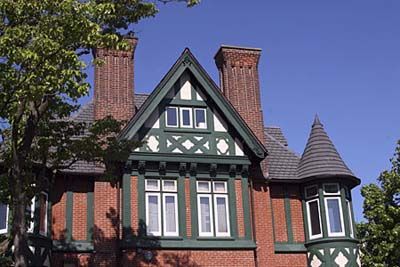
Turrets are best suited for homes with historical or traditional architectural designs. Half-timbered structures complement turrets very well, as this style originated during the same period when turrets were first seen. The exposed wooden framing of half-timbered houses creates a more cohesive look.
When incorporating a turret into a modern home, use materials and design elements that echo historical styles. Additionally, incorporate stonework or even gothic-inspired windows to maintain the home’s historical charm.
Circular View
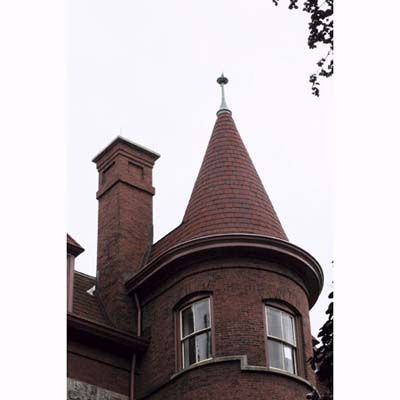
One of the best aspects of turrets is their ability to provide expansive views. The circular shape of a turret gives homeowners a beautiful view of your home’s exterior. When planning a turret, address the placement carefully to maximize your view.
Situate a turret on a corner or at the home’s highest point, incorporating large windows and a wrap-around window seat within the turret space. Adding features like built-in seating with storage or a small reading nook can maximize this new addition to your home.
Octagonal Shape
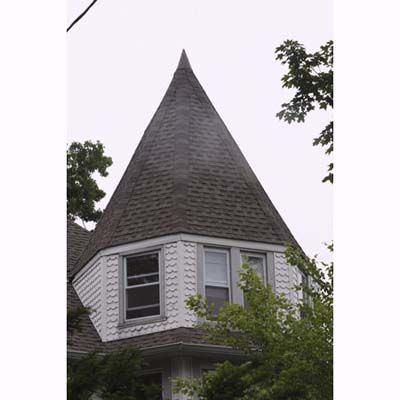
While circular turrets are visually appealing, they can be challenging to construct. An octagonal shape is more practical, providing a similar design while being easier to build. When designing an octagonal turret, create a smooth transition between where it connects to the main structure of your home.
This approach allows for simpler framing and easier integration with existing roof lines, while still achieving the desired turret look. Architectural elements like corner brackets or decorative trims can help blend the turret seamlessly into the rest of your home.
Window Placement

Window placements play a key role in the overall appearance of a turret. The standard approach is to place one window in each wall of an octagonal turret for a balanced look, but there are many other options.
You can install tall, narrow windows in pairs or combine different window shapes and sizes for visual interest. Dividing windows into multiple panes can help tie the rest of the house together. When planning window placement, factor in natural light, ventilation, and privacy considerations.
Corner View
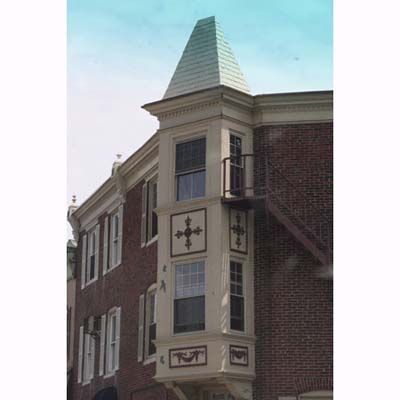
Rectangular turrets are best for corner placements on buildings, providing additional interior space and funneling light into the house. In mixed-use neighborhoods, corner turrets shelter entryways to ground-floor commercial spaces. When designing a corner turret, make sure it will complement the building’s residential and commercial aspects.
Unique Designs
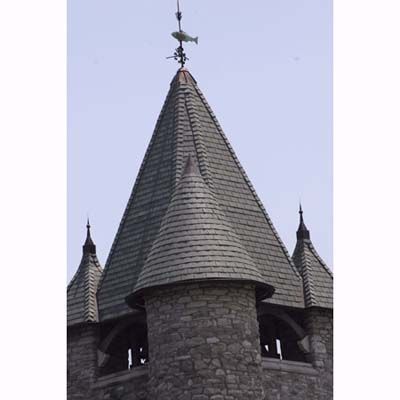
Multiple turrets of varying sizes with decorative elements like finials, can create an impressive structure. When planning these designs, maintain proportion and balance with the rest of your home. Multiple turrets are best for larger homes or spacious lots to avoid overwhelming the space. You have more design options with multiple turrets, like incorporating balconies or connecting bridges.
Miniature Turrets
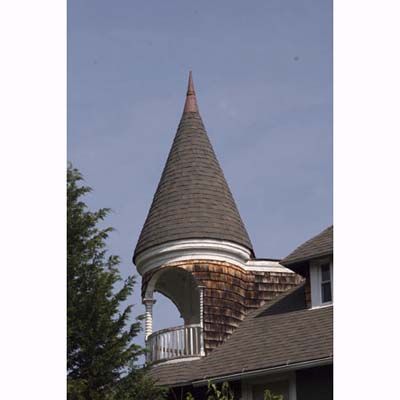
Small turrets are just large enough for a small lookout, becoming a focal point for your home’s exterior. Creative design elements, such as arched openings separated by posts, are a great way to make miniature turrets stand out.
When incorporating smaller turrets, placement needs to be carefully considered so they can complement your home’s other architectural features. Adding elements like weather vanes or trim can help small turrets feel more unique.
Adding Shelter
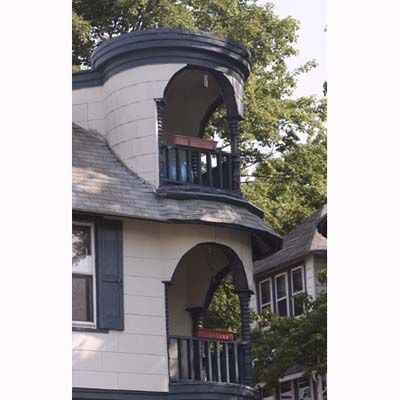
Turrets with open balconies can be beautiful and functional, but they may require additional outdoor protection. Partially enclosing a turret balcony can protect from wind and rain while still having open air. This approach helps to prevent your structure from weather-related damage.
When designing a partially closed turret balcony, factor in wind directions and sun exposure for comfort and functionality. You can also install retractable awnings or custom railings for safety while still having a nicely designed new feature.
Stacked Turrets
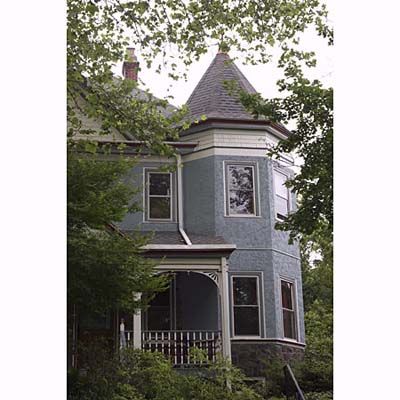
Stacking turrets vertically creates a dynamic feature while maximizing space. This approach allows for multiple levels of unique, circular rooms without increasing your home’s footprint. When designing these turrets, pay attention to the structural support and integrity of your main home’s framework.
While a stacked turret that reaches the ground technically becomes a tower, its visual look and interior design are similar to traditional turrets. Including features like an internal spiral staircase or connecting walkways is a great way to customize the interior.
Refined Details
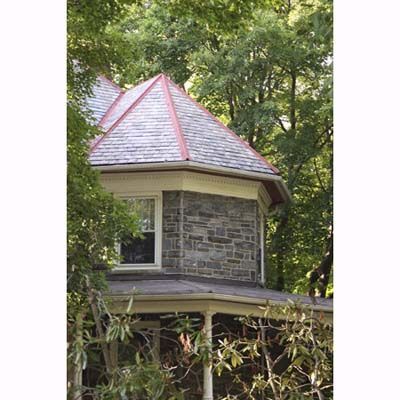
Balance simplicity and decoration when designing turret details. While turrets are generally eye-catching, excessive decoration can overwhelm your home. Simple touches, such as colored ridge caps or decorative valley flashing, can add visual interest without being too over the top. When selecting these details, make sure they complement the turret and your home’s overall architectural style.
Future Maintenance
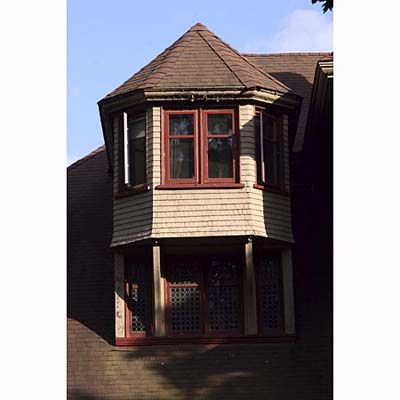
When adding a turret to your home, account for long-term maintenance requirements. Choose durable materials that require minimal upkeep so your turret remains a nice feature. Plan for easy access to all parts of the turret for cleaning, painting, and repairs. Incorporate features like built-in ladders or access panels to simplify maintenance tasks.
